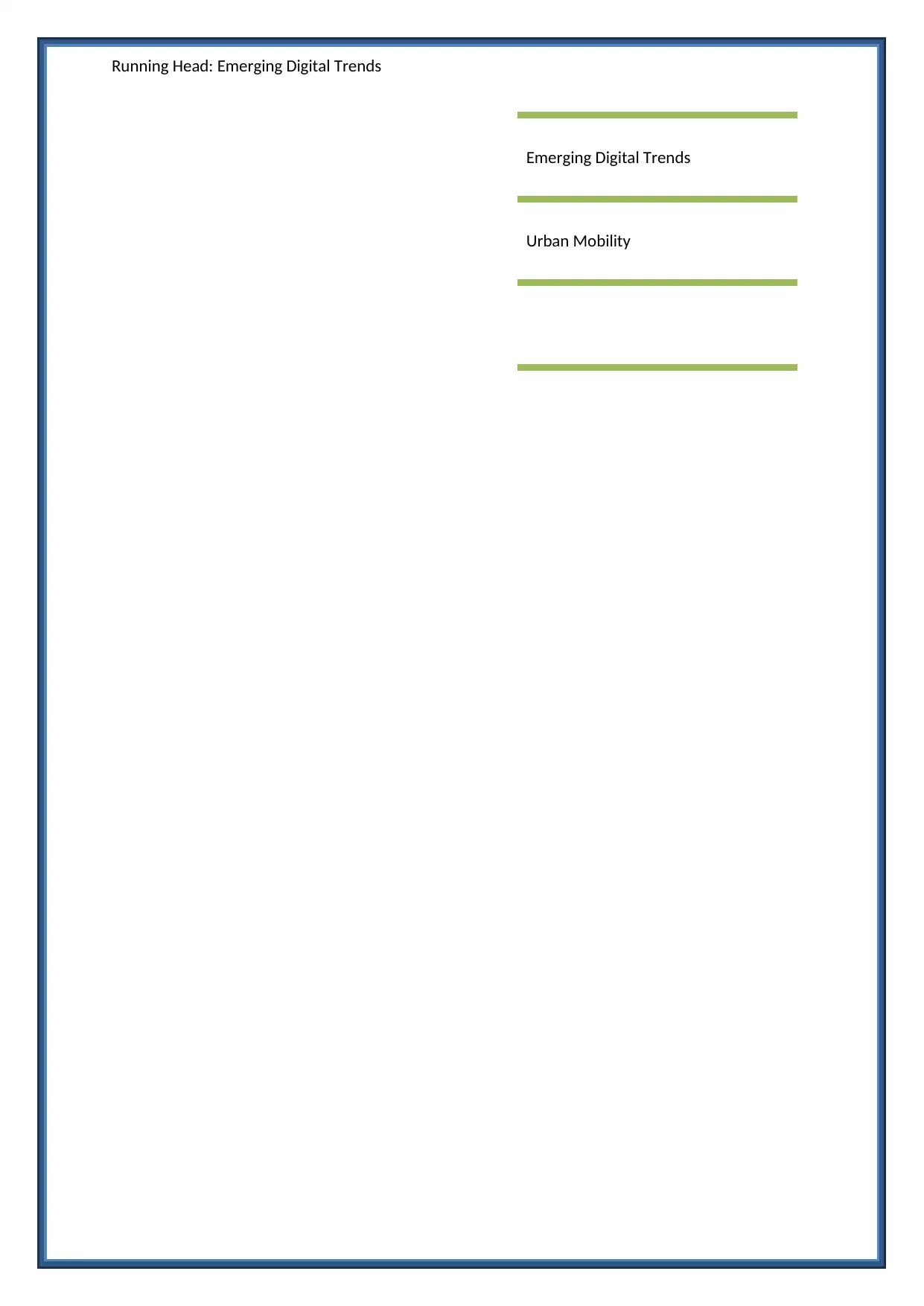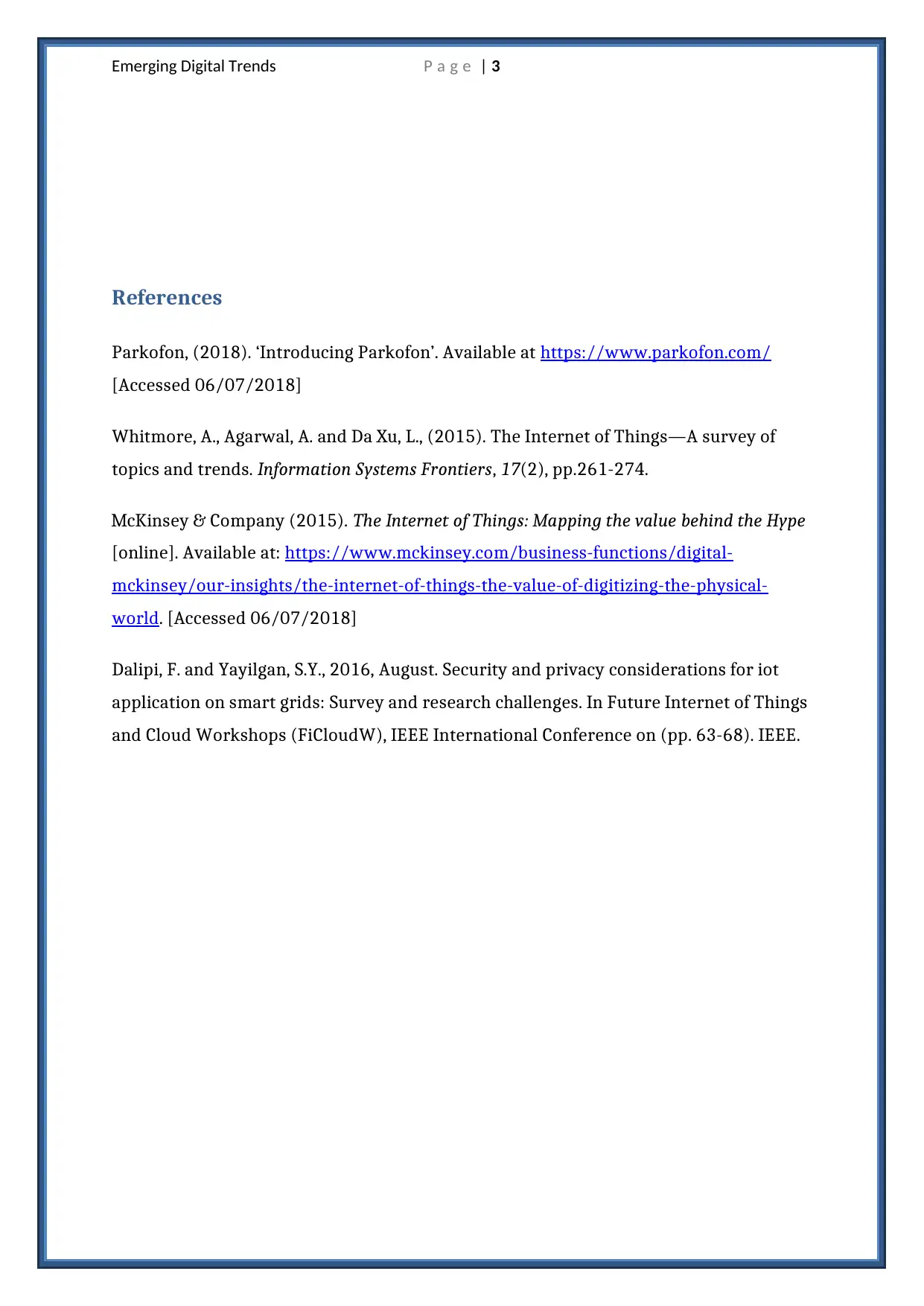Case Study: IOT, Data Collection, and the Future of Urban Mobility
VerifiedAdded on 2023/06/10
|4
|815
|132
Case Study
AI Summary
This case study examines the role of the Internet of Things (IOT) and data collection in shaping the future of urban mobility, focusing on Parkofon as a key example. It highlights the growing importance of IOT in various sectors, including vehicle manufacturing, smart cities, logistics, healthcare, and retail, with significant market values attached to each. Parkofon leverages IOT to improve parking efficiency, reduce congestion and pollution, and promote economic growth by providing real-time parking availability and convenient features like automated meter management. The case study emphasizes how Parkofon benefits from the growth in urban utility and IOT, utilizing collected data to create community solutions such as enabling parking anywhere metered parking is available, sending notifications when the meter is about to expire, and automating zero number punching for customers.
1 out of 4





![[object Object]](/_next/static/media/star-bottom.7253800d.svg)